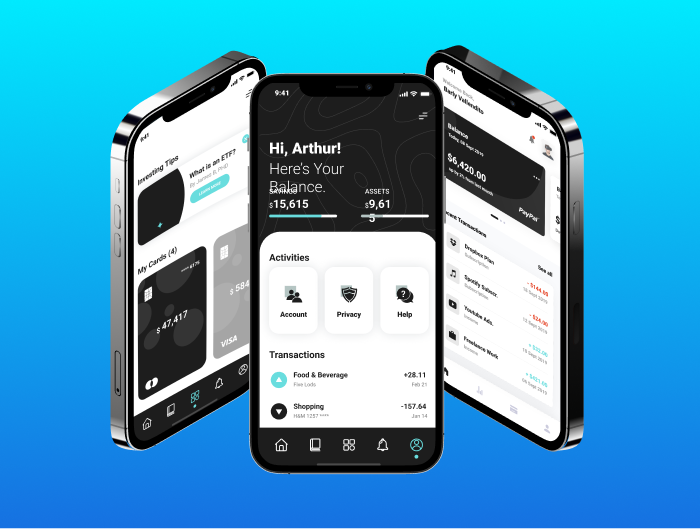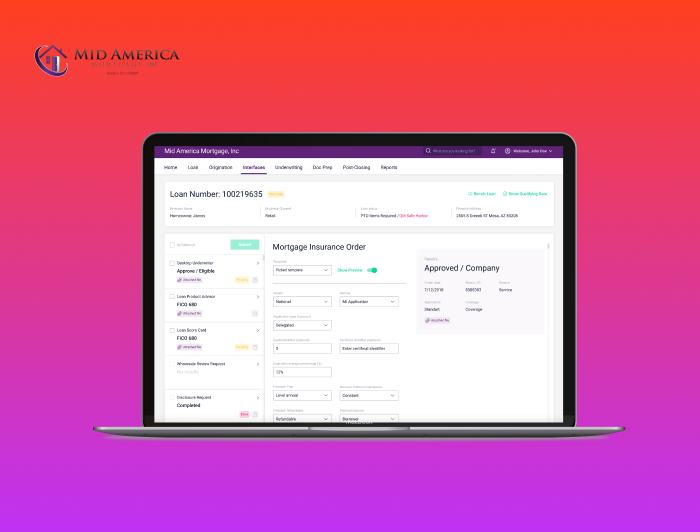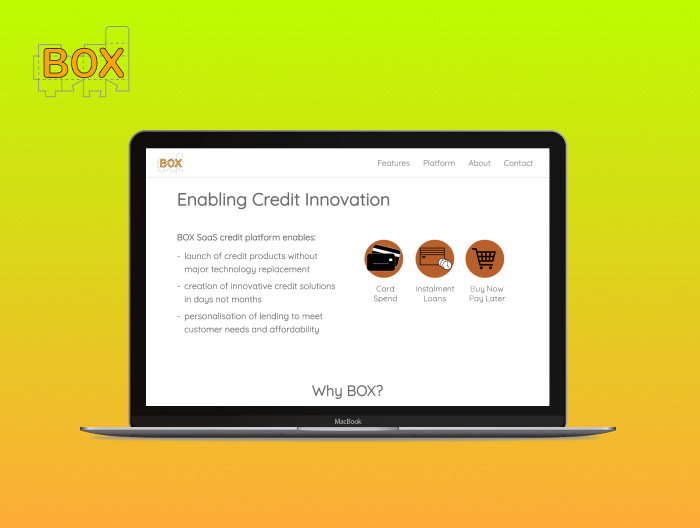
How Custom CRM Development Provides You the CRM Features You Need to Succeed
Are you confident that your interactions with customers are the best they can get? If not, a customized customer relationship management (CRM) software will be of great help.
Nearly every organization has partners, vendors, or customers that they interact with. Customer satisfaction is based on getting to know them and their needs. Do you have a centralized customer database, or do you have customer information silos? A centralized repository of customers is the backbone of CRM systems. You need to know crucial information about your customers to approach them appropriately.
When considering a CRM system, should you use existing commercial or open-source software, have a custom-built CRM, or some combination of both? The answer to that depends on where you are starting from and where you need to go.
- If you already have an off-the-shelf CRM that doesn’t meet your needs, you may need to extend or modify it to better suit your needs.
- Perhaps the existing solution is poorly integrated with a crucial legacy in-house system. Improved integration between those systems may meet your needs.
- Maybe your sales teams need improved mobile support, and a custom app on top of your existing solution may be what you need.
- Or perhaps your existing solutions licensing model makes it prohibitively expensive to use.
If you don’t have an existing CRM–or it doesn’t fully meet your needs–and local practices & legislation make it very hard to find a ready-made package that you can use, then a custom-built CRM may be the right choice for you.
Content Outline:
Key CRM Features
What are CRM systems, and how can they help you? As already mentioned, the backbone of a CRM is the centralized customer repository. Building on that foundation, CRM’s have the biggest impact on the business areas of:
- customer management
- sales
- marketing
- customer service
Each business is unique and has different ways of customer interactions and customer communications. However, there are nine CRM features across many organizations that consistently provide value.
Centralized customer data
In addition to keeping track of customer demographics, you need to maintain multi-channel contact information so that you can reach out as appropriate. Furthermore, you need to classify and stratify your customers using factors that make sense for your business.
Centralized customer interactions
Once you have uniquely identified a customer, it is now possible to create a complete picture of the interactions with your customers. This includes data directly captured within the CRM and data consolidated from other sources.
Sales pipeline management
Most organizations have a sales interaction with their customers. CRMs can help manage your sales pipeline, improve how you generate leads, and convert them into sales. Linking your sales pipeline and your customer base, CRMs support various sales forecasts models. In addition, a centrally managed sales pipeline can help you understand and reward sales staff performance and effectiveness.
Market campaigns
Market budgets are a significant expense for many organizations. Are your marketing campaigns effective? CRMs help with the planning, execution, and monitoring of such campaigns. They can also help you analyze campaign effectiveness using the metrics that matter to you.
Customer service
Are you–and your customers–satisfied with the service you provide to your customers, or is there room for improvement? Customers can contact you for positive reasons (such as wanting to order replacement parts or looking for guidance on how to best use your products/services), or they can contact you for less positive reasons (such as repairs, returns, concerns about product/service performance). Whatever the reason for contacting you, you want to make it the most positive experience possible. Giving them freedom of choice on how and when to contact you with quick and effective responses is critical to customer satisfaction. Being able to interact via chat, chatbots, social media, email, or phone gives the freedom people need. Your CRM needs to incorporate those features to record your customer interactions centrally.
Customer self-service
Can your customers handle their own change of address or other key information changes, or do they need to fill out forms or call your customer service group? In addition to researching information from your website and interacting with customer service, a good CRM allows customers to update data about themselves whenever and however they want.
Integrations
Your CRM will not be able to capture all relevant customer information directly. To get a full 360-degree view of your client, you need to integrate with other core business systems. Therefore, good CRMs need to provide critical building blocks that support that integration.
Reporting
Your CRM will not be able to capture all relevant customer information directly. To get a full 360-degree view of your client, you need to integrate with other core business systems. Therefore, good CRMs need to provide critical building blocks that support that integration.
Analytics
Now that you have organized and consolidated information on customers and your interactions with them, you should gain insight from that data. Getting answers to key questions can help you focus your efforts better. Some of the questions CRM business intelligence and analytic components will answer are:
- Who are your best customers?
- Who are your best salespeople?
- What are your best communication channels?
- How effective are your marketing campaigns?
Your CRM analytics should include both built-in analytics and the ability to do additional ad hoc analysis.
Developing a Custom CRM System
So, what does it take for you to have the CRM system you want and need? As mentioned, that depends on where you are starting from and where you want to go. Both of those questions are answered through a needs assessment. For example, do you have all the required tools available from your existing CRM or use desktop publishing tools (email, spreadsheets, and word-processors) as a CRM system substitute instead?
- First, you need to determine how satisfied you are with the costs, ease of use, and capabilities of existing CRM services. Once you decide if you need to supplement or replace the CRM, you can scope the effort.
- Next, you need to visualize the end solution. For any custom components, should you host them in your data center or a cloud environment? According to Market Research Future, in 2021, 87% of CRM deployments became cloud-based. You also need to decide who needs to access what–and how they’re going to do that: via the web, desktop, or smartphone interfaces. According to Deloitte, over 80% of the world’s eligible population uses smartphones, and they look at them over 50 times per day. Should you make it easy for them to access you via their phone?
Outsource versus Build In-House
Do you have the in-house expertise to dedicate to a custom CRM project? Is directing them away from other in-house initiatives a good use of your IT team? Many organizations have found that outsourcing CRM development is the best way to use their sparse internal resources. Bringing in a team of professionals who understand the business and technical aspects of CRM has helped turn customer relationship management from a pain point into a strategic advantage.
Integration
Your loan software cannot be an island. It needs to interact with other organizations and service providers. Start the design process by answering the following questions:
- Should you capture information from major credit bureaus?
- Should you accept payments from a variety of service providers?
- Should you integrate customer relationship management (CRM) platforms to manage marketing client campaigns?
- Should you integrate with your accounting systems?
- Should you integrate with collection and credit organizations if you need to proceed to a collections process?
2. Lack of Expertise
- Should you capture information from major credit bureaus?
- Should you accept payments from a variety of service providers?
- Should you integrate customer relationship management (CRM) platforms to manage marketing client campaigns?
- Should you integrate with your accounting systems?
- Should you integrate with collection and credit organizations if you need to proceed to a collections process?

3. Higher Prices
There is no reason to dwell too much on this one, as this is a complete hoax. There is actually no explanation to how this superstition emerged on the surface, while facts remain facts. The average hourly rate per one developer in the United States is $150; in Europe, it amounts to €150. Meanwhile, if we’re talking about Asia, Africa, and Eastern Europe (where many countries are still not part of the European Union), the damage will be approximately $75. It seems like the difference is even more than tangible, given that the quality of services might be even better.
4. Irresponsible Vendors
When you’ll hear about irresponsible vendors from outside Europe, may you ask yourself a question of how territorial affiliation can be the cause of irresponsibility? While you’re in the IT business, it is quite probable that logical reasoning is one of your core virtues. There are both responsible and irresponsible vendors within Europe and outside its boundaries. Hence, when it comes to choosing a software outsourcing company, think of their tech expertise, portfolio, and clients reviews, as this is where the grain of truth lies.

Why NerdySoft for Outsourcing a Custom CRM System Development
Learn more about our approach to custom software development and check the featured works
Latest Insights
Stay informed on the latest updates and trends to follow in financial services, digital transformation and software development from NerdySoft





